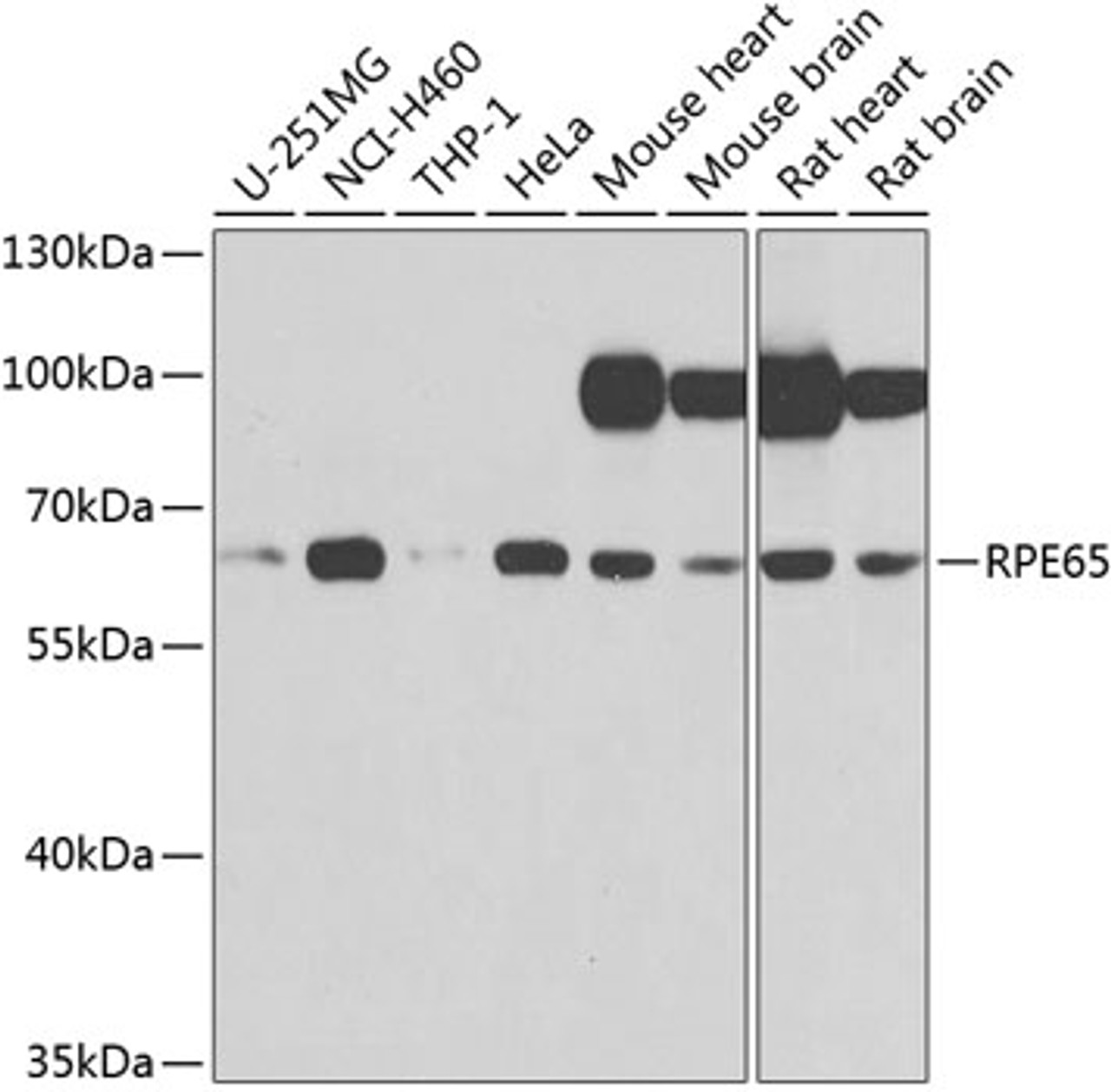Product Description
RPE65 Antibody | 23-937 | ProSci
Host: Rabbit
Reactivity: Human, Mouse, Rat
Homology: N/A
Immunogen: Recombinant fusion protein containing a sequence corresponding to amino acids 274-533 of human RPE65 (NP_000320.1) .
Research Area: Cancer, Neuroscience, Signal Transduction
Tested Application: WB
Application: WB: 1:500 - 1:2000
Specificiy: N/A
Positive Control 1: U-251MG
Positive Control 2: NCI-H460
Positive Control 3: THP-1
Positive Control 4: HeLa
Positive Control 5: Mouse heart
Positive Control 6: Mouse brain
Molecular Weight: Observed: 61kDa
Validation: N/A
Isoform: N/A
Purification: Affinity purification
Clonality: Polyclonal
Clone: N/A
Isotype: IgG
Conjugate: Unconjugated
Physical State: Liquid
Buffer: PBS with 0.02% sodium azide, 50% glycerol, pH7.3.
Concentration: N/A
Storage Condition: Store at -20˚C. Avoid freeze / thaw cycles.
Alternate Name: retinal pigment epithelium-specific protein 65 kDa, LCA2, RP20, mRPE65, rd12, sRPE65, RBP-binding membrane protein, p63, retinal pigment epithelium-specific 61 kDa protein, retinal pigment epithelium-specific protein (65kD) , retinitis pigmentosa 20
User Note: Optimal dilutions for each application to be determined by the researcher.
BACKGROUND: This gene encodes a protein which is located in the retinal pigment epithelium and is involved in the production of 11-cis retinal and in visual pigment regeneration. There are two forms of this protein, a soluble form called sRPE65, and a palmitoylated, membrane-bound form known as mRPE65. mRPE65 serves as the palmitoyl donor for lecithin retinol acyl transferase (LRAT) , the enzyme that catalyzes the vitamin A to all trans retinol step of the chromophore regeneration process. Both mRPE65 and sRPE65 also serve as regulatory proteins, with the ratio and concentrations of these molecules playing a role in the inhibition of 11-cis retinal synthesis. Mutations in this gene have been associated with Leber congenital amaurosis type 2 (LCA2) and retinitis pigmentosa.
 Euro
Euro
 USD
USD
 British Pound
British Pound
 NULL
NULL










